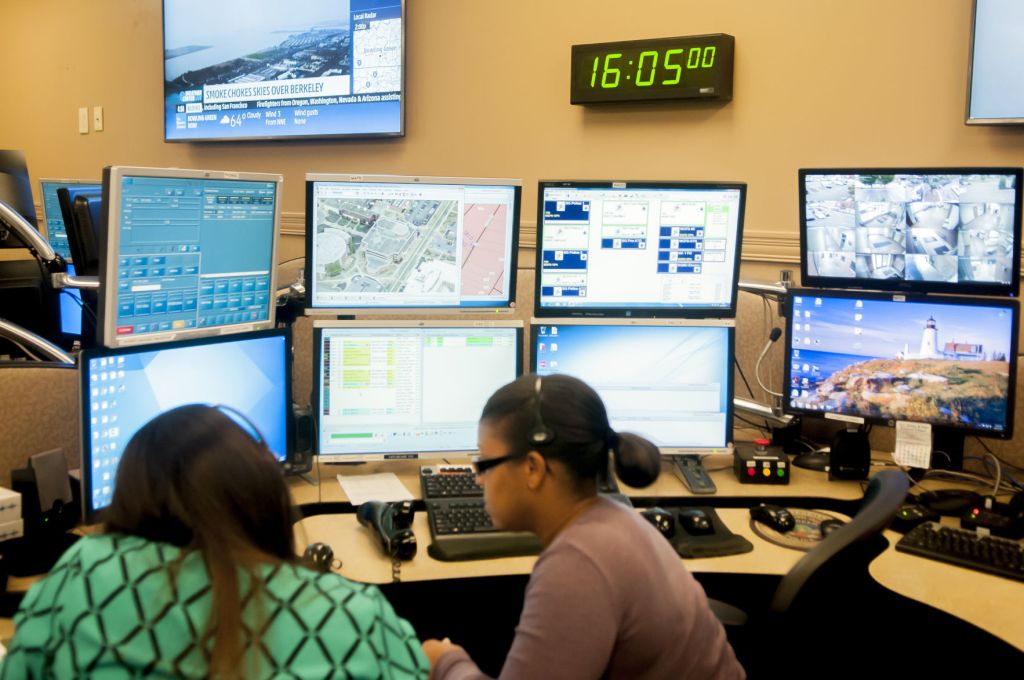Digital radio system enhances city, county emergency communications
Published 5:45 pm Friday, October 13, 2017

- Bowling Green Police Department dispatchers Yvonne Evans (right) and Chelsy Woodward use a new 800-megahertz digital radio system Thursday, October 12, 2017, at the downtown police department. (Bac Totrong/photo@bgdailynews.com)
Warren County Sheriff’s Office Capt. Tim Robinson has less-than-fond memories of the 1998 Bowling Green hailstorm and how it affected the ability of local police to communicate.
As the fist-sized hailstones battered homes and cars around the city, the radio system used by law enforcement also took a beating.
“When that happened, it knocked everything out,” recalled Robinson, a 24-year law enforcement veteran. “We had a fella sit in his cruiser at the top of Hospital Hill, dispatching to each side of the hill.”
Robinson can now joke about those analog-communication days because he knows future weather-related or other emergencies will not prompt him or any other uniformed officer to seek higher ground to get a radio signal.
Warren County Emergency Management Office Director Ronnie Pearson informed Warren County Fiscal Court magistrates this week that the new city-county digital radio system is fully operational, capping off a 10-year-long transition from analog to digital.
“I’m glad it’s done,” Pearson said of the new 800-megahertz radio system that encompasses 38 local agencies using some 1,600 radios.
Pearson explained that the process of switching from analog to digital began in 2007 and culminated in the city of Bowling Green and Warren County signing a contract with Motorola USA in 2013.
Four years later, city and county law enforcement, rescue squads, fire departments and other agencies have a communications system that Pearson says is light years ahead of the old analog system.
After signing the contract with Motorola, the city-county Public Safety Mobile Radio Communications System Agency built a new tower at Hadley and formed partnerships with WBKO and WNKY television stations to use their towers.
The resulting increase from one tower to four means even remote areas of the county can now be reached.
“With the old system, we had 58 percent coverage of the county,” Pearson said. “The other 42 percent had spotty or no coverage. We enhanced that by going to four towers. When we did a test, we found that we now have 94.6 percent coverage.”
Robinson explained that the new system is “redundant,” meaning that if one tower fails, another will take over and carry the signal. He also pointed out that the system includes backup generators in case of power failure.
Both Pearson and Robinson tout the new system’s ability to allow the various agencies to communicate with each other. Although each agency has its own channel, the hand-held radios allow for users to switch to other channels.
“We can communicate with pretty much everybody,” Robinson said. “You can go to a mutual channel and the different agencies can talk to each other.”
Bowling Green Police Chief Doug Hawkins sees other advantages with the new digital system.
“Prior to the new radio system, virtually all local responders could operate together on the old system,” he said. “But that system wasn’t as reliable or redundant. We have gained current technology.
“With the digital signal, we have greater penetration and coverage over the geography of the county. We have a better signal in low-lying areas. Places where we couldn’t communicate before, we can now. It’s much better signal quality than before.”
And maybe the best feature for Hawkins and other local officials may be the radio system’s cost. Motorola gave an original bid of $13 million, but the city-county partnership was able to eliminate some features and negotiate the price down to just under $7 million.
Pearson pointed out that the final expenditure was more than $50,000 under budget.
“We negotiated with Motorola to get the system we needed at a price we felt was reasonable,” said Hawkins. “I think we’re all satisfied.”
Bowling Green Mayor Bruce Wilkerson, a former police officer, agrees with Hawkins.
“The ability to communicate with the various agencies if we have a natural disaster like Houston had is critical,” he said. “This is so far advanced from what I was used to. It will allow responders to get their jobs done in a safe and efficient fashion.”
Likewise, Warren County Judge-Executive Mike Buchanon believes the new communications system will keep response times to a minimum, meaning “citizens in need throughout Warren County are much safer.”






